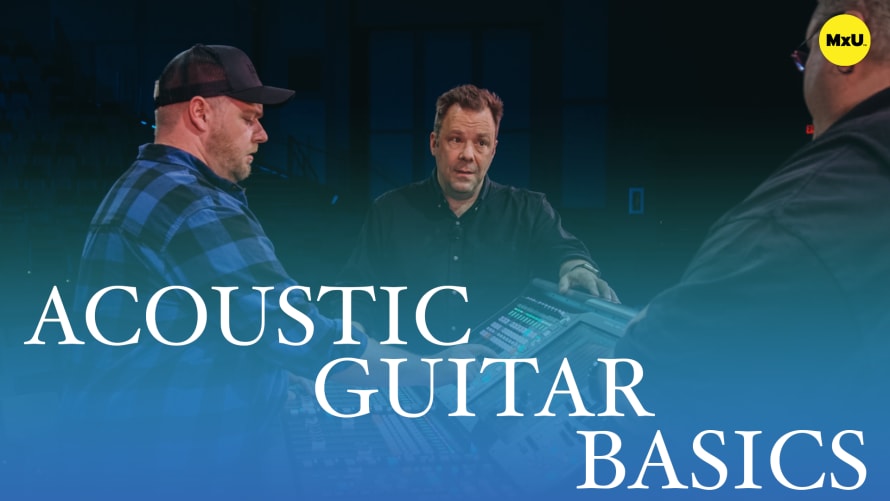Acoustic Guitar Basics


Continue watching
Sign up to continue watching Acoustic Guitar Basics
Pricing
Starting at $19.95 /mo
More in MxU
Learn the basics of mixing an acoustic guitar. Jeff, Andrew, and Lee discuss integrating guitars into your church’s band. They focus on enhancing their sound quality despite the many common challenges that come with mixing an acoustic guitar.
Key Points:
- The quality of an acoustic guitar's sound begins with its source. The DI box, pickup, pick type, string type, and the player's technique significantly impact the overall sound.
- To achieve a good sound, you must address common issues. These include tuning, string intensity, and the variability of playing styles. This is especially true in a live worship context. The guitar may accompany vigorous singing.
- Applying a high-pass filter can effectively remove low-end ‘boominess’. This ensures the guitar blends well with other instruments without dominating the mix.
- Adjusting the EQ, especially in the high-mid range, can make the guitar more clear and present in the mix.
- Compression is a valuable tool for leveling out inconsistencies in playing dynamics. It makes the guitar's performance feel more cohesive and consistent.
- The compressor's attack and release settings should be fast. They should handle quick transients in acoustic guitar playing. Use moderate gain reduction to maintain natural dynamics.
- Acoustic guitars must be carefully integrated with electric guitars, keyboards, and bass. This requires careful consideration of the overall sonic landscape. It ensures each element complements the others without overcrowding the mix.









